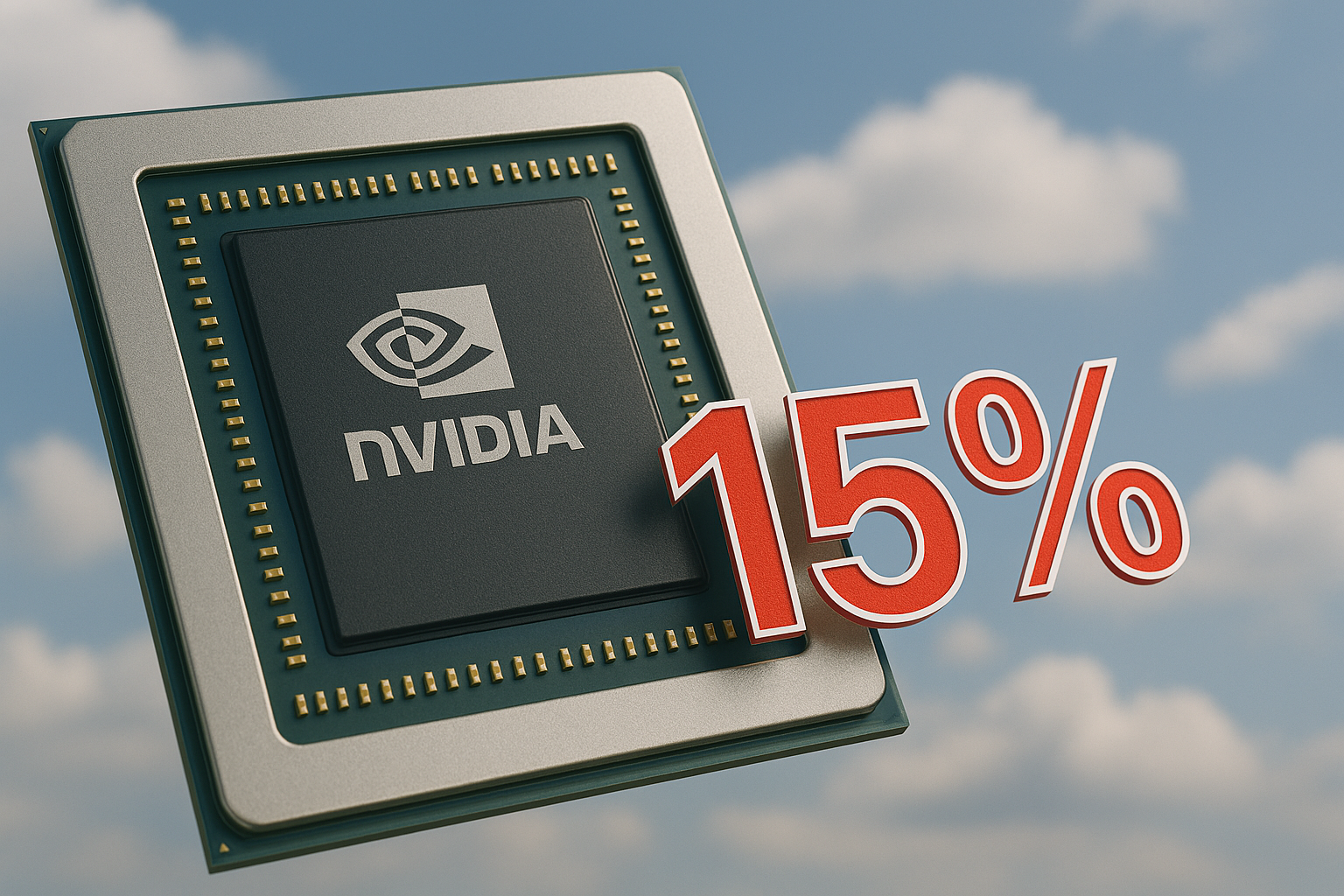A New Kind of Tech Deal
In a move that has stunned both Wall Street and Washington, the United States government has secured a 15 percent cut of certain artificial intelligence chip sales by Nvidia and AMD to China. It is a deal that blurs the line between trade policy and corporate profit-sharing—and one that could signal a seismic shift in how the U.S. manages its technology exports.
For decades, Washington has used export controls, tariffs, and sanctions to steer the global flow of technology. But this arrangement is something new entirely: an agreement in which two of America’s most powerful tech companies effectively pay the government for the privilege of selling to a restricted market. Supporters see it as a pragmatic win-win. Critics see it as an alarming precedent.
The Backstory: Sanctions, Chips, and a High-Stakes Meeting
The roots of this deal stretch back to tightening U.S. restrictions on advanced semiconductor sales to China. Concerned about the role of high-performance chips in military applications, Washington in recent years has limited what kinds of processors companies like Nvidia and AMD could export. These curbs have been a key front in the ongoing U.S.–China tech rivalry.
Earlier this year, Nvidia’s H20 chip and AMD’s MI308—both powerful accelerators designed for AI training—fell into a gray area. Too advanced to be freely exported, yet designed to comply with prior restrictions, they became the subject of tense negotiations. Reports indicate the final breakthrough came after a direct meeting between Nvidia CEO Jensen Huang and President Donald Trump, where the revenue-sharing arrangement was reportedly proposed as a way to allow sales while still capturing some of the economic value for the U.S. government.
A Deal Unlike Any Other
Under the terms, Nvidia and AMD will pay the U.S. government 15 percent of the revenue they earn from AI chip sales to China that fall under this special export license. In exchange, the companies are permitted to sell their restricted chips to Chinese clients, opening a potentially vast market that had been partially closed to them.
The uniqueness of the arrangement cannot be overstated. While Washington has long collected tariffs on goods entering the United States, this is not a tariff. It is not a fine, nor a traditional tax on exports, which the Constitution generally forbids. Instead, it is structured as a licensing fee—essentially a cost of doing business under a specific regulatory exception.
That distinction could be key to the deal’s survival. Already, some legal scholars are questioning whether the arrangement might face challenges in court. Export control law gives the executive branch wide discretion, but critics argue the government is venturing into legally untested territory.
Economic Stakes: Billions on the Table
The commercial incentives for Nvidia and AMD are obvious. Despite China’s push for homegrown chip development, demand for high-end AI processors remains sky-high. Major Chinese tech firms—from internet giants to research institutions—are hungry for the kinds of chips that only a few companies in the world can produce.
Analysts estimate that sales under this new arrangement could easily reach into the billions over the next year alone. For Nvidia, whose market capitalization has soared past the $3 trillion mark, this represents both a lucrative revenue stream and a way to maintain dominance in AI hardware. For AMD, it is an opportunity to close some of the gap with its larger rival.
Markets have taken note. Nvidia’s shares hit a record high in the days after the deal was announced, while AMD edged close to its 52-week peak. Taiwan Semiconductor Manufacturing Company, which fabricates chips for both firms, also saw its stock remain near all-time highs.
Strategic Implications: Pragmatism or Precedent?
Beyond the financial windfall, the deal marks a striking example of policy pragmatism. Rather than block exports outright—a move that might encourage China to accelerate its domestic semiconductor programs—Washington is allowing sales but ensuring it captures a share of the profits. That revenue, in theory, could be reinvested into domestic tech development or infrastructure.
Supporters argue this is a creative middle ground. It avoids outright bans, which can sometimes backfire, while ensuring that the U.S. benefits economically from its technological lead. In a global market where innovation and market dominance can shift quickly, every advantage counts.
But the risks are equally clear. By creating a framework where companies can pay to bypass certain restrictions, the U.S. could undermine the credibility of its export control regime. Other nations might see the move as a sign that rules are negotiable if the price is right—a dangerous perception in an era of intensifying geopolitical competition.
The Legal Gray Zone
From a constitutional perspective, the deal is walking a fine line. Article I, Section 9 of the U.S. Constitution prohibits taxes or duties on exports from the states. The government is framing the payment as a licensing fee tied to regulatory approval, not as a tax. But some legal experts suggest that, in effect, it operates much like a tax—raising questions about whether it could be challenged in court.
There are also questions about precedent. If this kind of revenue-sharing arrangement becomes a tool in U.S. trade and export policy, it could be applied in other industries—energy, biotechnology, aerospace—where strategic technology intersects with global demand. While this might be attractive from a revenue standpoint, it could spark debates about the proper boundaries of government involvement in private commerce.




